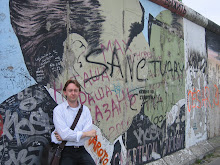 Check your weekend supplements. There's another ad campaign for Liverpool doing the rounds as the city attempts to keep the momentum rolling after the European Capital of Culture.
Check your weekend supplements. There's another ad campaign for Liverpool doing the rounds as the city attempts to keep the momentum rolling after the European Capital of Culture. The focus is the Hope Street cultural quarter. The district includes the Art Deco-styled Liverpool Philharmonic Hall, the award-winning Hope Street Hotel with its adjoining restaurant, The London Carriage Works, and the city's twin cathedrals. It's also home to the annual arts fest, the Hope Street Festival, held in September.
And to the Everyman Theatre, which was also this week the subject of a £12.8m investment from the Arts Council England to upgrade facilities to a 400-seater auditorium, workshops and writers' hub. The project is due for completion in 2013.
The angle of the campaign is cultural Liverpool, focusing on cultral attractions as a means to boost short-break visits to the city.
The campaign (above, left) forms part of £175,000 worth of national advertising to raise awareness of Liverpool as a cultural destination. It is part of a wider Destination Management Plan towards 2015 to grow hotel occupancy and boost the visitor economy to support 30,000 jobs.
The advert will run in national newspaper magazine supplements, including the London Evening Standard, and magazines, such as Conde Nast Traveller.
A poster campaign will also run at London Underground stations, including Euston, Victoria and Waterloo. A similar campaign will run at Edinburgh's Haymarket train station during The Edinburgh Festival.
The Mersey Partnership (TMP), the regional tourist body behind the ads, are keen to point out that a similar campaign in spring, based around the Unesco World Heritage waterfront, boosted hits to the official tourism website by 50% and led to an increase in accommodation bookings of 432%.
But, as a journalist, I can't help being cynical about the value of advertising.
Are they reaching the right market? And does the market targeted by these adverts acually care about Liverpool?
£175,000 strikes as a lot of money to spend on an ABC1 audience living mainly in the southeast with little knowledge, or interest, in Liverpool. Targeted press trips, viral online campaigns and generating local interest with the ABC1 demographic are surely far cheaper and more effective.
I mean, press and poster advertising? That's just so old media. Isn't it?
I'll be discussing this and other topics with Duncan Barkes on the City Talk breakfast show Tuesday at 7.45am. Post your comments below and I'll get them on air.






